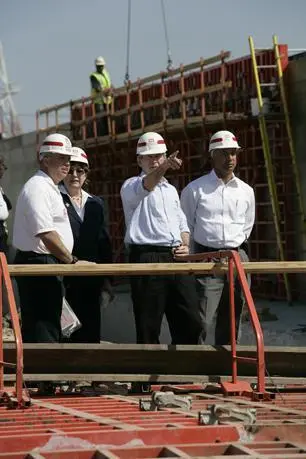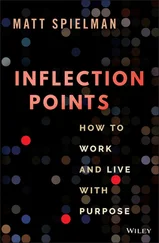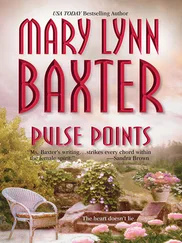I told Chief of Staff Andy Card—and later Josh Bolten—that I expected regular progress reports on our initiatives in the Gulf Coast. Top government officials gathered routinely in the Roosevelt Room for detailed briefings on issues such as how many victims had received disaster benefits checks, the number of Gulf Coast schools reopened, and the cubic yardage of debris cleared.
I wanted the people of the Gulf Coast to see firsthand that I was committed to rebuilding, so I made seventeen trips between August 2005 and August 2008. Laura made twenty-four visits in all. We both came away impressed by the determination and spirit of the people we met.
In March 2006, I visited the Industrial Canal levee, which had ruptured and flooded the Lower Ninth Ward. We saw huge piles of debris and trash as we drove to the site, a reminder of how far the neighborhood still had to go. Mayor Nagin and I grabbed our hard hats, climbed to the top of the levee, and watched pile drivers pound pillars seventy feet underground—a solid foundation designed to withstand a Katrina-size storm. Nothing was more important to reassuring New Orleans’s exiled residents that it was safe to return to the city they loved.

At the rebuilding of the Industrial Canal levee. White House/Eric Draper
On the second anniversary of the storm, Laura and I visited the Dr. Martin Luther King, Jr., Charter School for Science and Technology. Two years earlier, the school had been submerged under fifteen feet of water. Thanks in large part to a determined local principal, Doris Hicks, MLK became the first school in the Lower Ninth Ward to reopen. As a former librarian, Laura had been saddened by the number of books destroyed in the storm. She started a private fundraising campaign to help New Orleans schools rebuild their collections. Over the years, her leadership and the generosity of the American people helped send tens of thousands of books to schools across the Gulf Coast.
The story in Mississippi was just as uplifting. In August 2006, I went back to Biloxi, where I visited four days after the storm. Beaches that had been covered with debris a year earlier had been returned to their shimmering white-sand beauty. Seven casinos, supporting hundreds of jobs, had reopened. Church congregations that had been separated were back together again. Few people’s lives had changed more than Lynn Patterson’s. When I met him a year earlier, he was digging cars out of the muck in a neighborhood where all the houses were gone. When I came back to Biloxi, he gave Laura and me a tour of his new home, which had been rebuilt with the help of taxpayer dollars.

In the wake of Katrina, I asked Fran Townsend—a talented former New York City prosecutor who served as my top homeland security adviser in the White House—to study how we could better respond to future disasters. Her report reaffirmed the longstanding principle that state and local officials are best positioned to lead an effective emergency response. It also recommended changes in the federal government’s approach. We devised new ways to help state and local authorities conduct early evacuations, developed backup communications systems, established a National Operations Center to distribute timely situation reports, and set up an orderly process for deploying federal resources—including active-duty troops—in cases where state and local first responders had become overwhelmed.*
The new emergency response system was tested in August 2008, when Hurricane Gustav barreled across the Gulf of Mexico toward New Orleans. I held regular videoconferences with federal, state, and local officials in the days leading up to the storm. Mike Chertoff and the new FEMA director, former Miami-Dade fire chief Dave Paulison, relocated to Baton Rouge to oversee preparations. Shelters were ready and well stocked. Louisiana Governor Bobby Jindal, the talented Republican elected in 2007, worked closely with Mayor Nagin to order a mandatory evacuation. “You need to be scared and you need to get your butts out of New Orleans right now,” the mayor said.
When Gustav made landfall, the first reports were that New Orleans had dodged a direct hit. I had heard that before. This time, though, the levees held and damages in New Orleans were minimal. A few weeks later, Hurricane Ike smashed into Galveston, Texas. Property damage was extensive—only Andrew and Katrina were costlier—but thanks to good preparation at the state level, many lives were spared. For all the devastation Katrina caused, part of the storm’s lasting impact is that it improved the federal government’s ability to support state and local governments in responding to major disasters.

Even when the neighborhoods of New Orleans are restored and the homes of Mississippi are rebuilt, no one who endured Katrina will ever fully recover. That is especially true for the tens of thousands who lost their homes and possessions, and—worst of all—the families of the more than eighteen hundred Americans who died.
In a different way, it is true of me, too. In a national catastrophe, the easiest person to blame is the president. Katrina presented a political opportunity that some critics exploited for years. The aftermath of Katrina—combined with the collapse of Social Security reform and the drumbeat of violence in Iraq—made the fall of 2005 a damaging period in my presidency. Just a year earlier, I had won reelection with more votes than any candidate in history. By the end of 2005, much of my political capital was gone. With my approval ratings plummeting, many Democrats—and some Republicans—concluded they would be better off opposing me than working together. We managed to get important things done, including reauthorizing the AIDS initiative, fully funding our troops, confirming Sam Alito to the Supreme Court, and responding to the financial crisis. But the legacy of fall 2005 lingered for the rest of my time in office.
This is not to suggest that I didn’t make mistakes during Katrina. I should have urged Governor Blanco and Mayor Nagin to evacuate New Orleans sooner. I should have come straight back to Washington from California on Day Two or stopped in Baton Rouge on Day Three. I should have done more to signal my sympathy for the victims and my determination to help, the way I did in the days after 9/11.
My biggest substantive mistake was waiting too long to deploy active-duty troops. By Day Three, it was clear that federal troops were needed to restore order. If I had it to do over again, I would have sent the 82nd Airborne immediately, without law enforcement authority. I hesitated at the time because I didn’t want to leave our troops powerless to stop sniper attacks and the other shocking acts of violence we were hearing about on TV. We later learned these accounts were wildly overstated, the result of overzealous correspondents under pressure to fill every second of the twenty-four-hour cable news cycle.
Ultimately, the story of Katrina is that it was the storm of the century. It devastated an area the size of Great Britain, produced almost nine times more debris than any previously recorded hurricane, and killed more people than any storm in seventy-five years. The economic toll—three hundred thousand homes destroyed and $96 billion in property damage—outstripped that of every previous hurricane on record.
Yet destruction and death did not have the final word for the people of the Gulf Coast. In August 2008, I visited Gulfport, Mississippi, and Jackson Barracks in New Orleans, the home of the Louisiana National Guard, which had flooded during Katrina. It was striking to see how much had changed in three years.
Читать дальше













